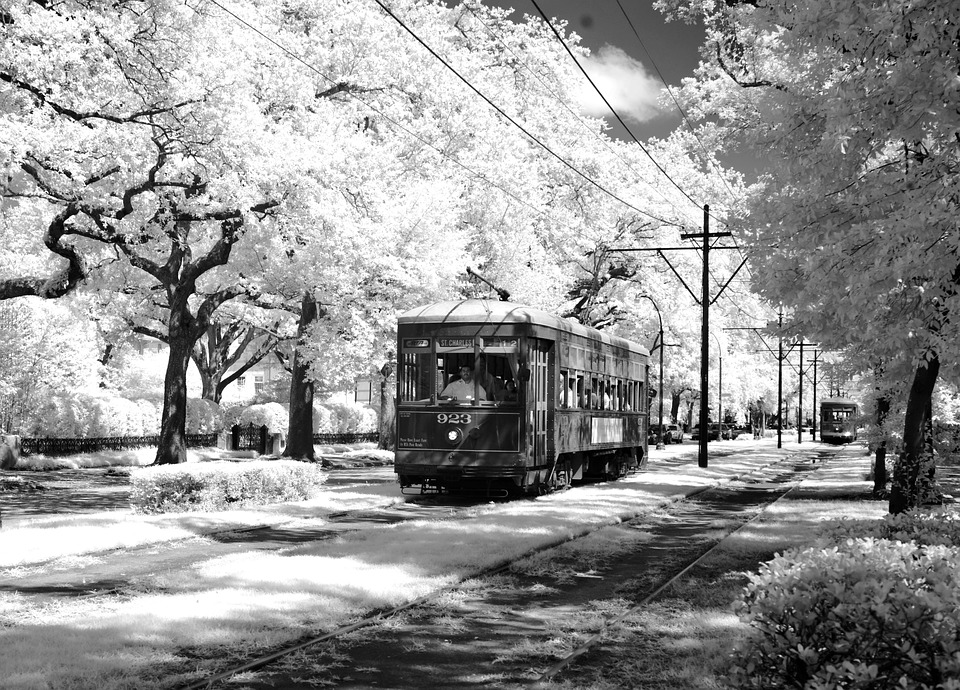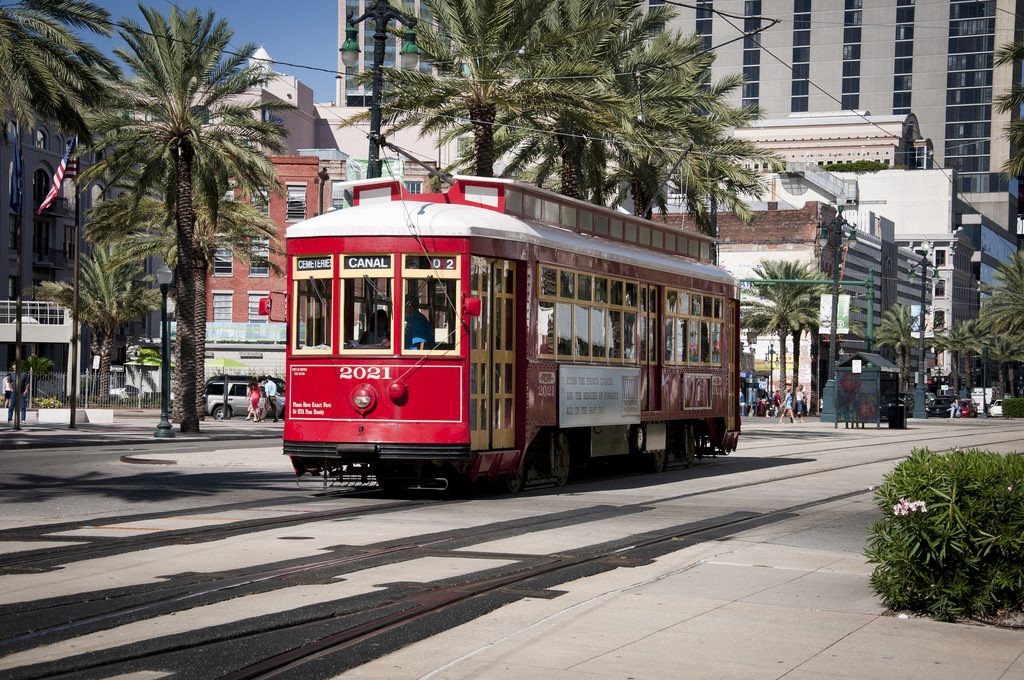
This is a case study outlining TMV’s involvement with Brookville Equipment Corp., and their 2007-2010 contract to rebuild New Orleans’ swamped streetcars, after 2005’s terrible hurricane season.
August 28, 2005

Katrina, a category 5 hurricane, is predicted to hit New Orleans. All streetcars are taken off duty and stowed away in their stations for safe keeping, until the storm passes. New, red streetcars are sent to Canal Station and the vintage green streetcars to Carrollton Station.
August 29, 2005

Birds eye view of a flooded NewOrleans after hurricane katrina 
Flooded streets of New Orleans after Hurricane Katrina
Katrina forces a causal sequence that leads to flooding throughout the city.
August 31, 2005

Streetcar holding station New Orleans 
Canal Street Station flooded streetcars new orleans
Storm dissipates. Flood waters, carrying oil and corrosive chemicals, are found enveloping the streetcars in Canal Station. This will take weeks to clean up.
November 14, 2005
Damage assessed on streetcars lifted from the mire. All 24 deemed inoperable. Months and millions of dollars projected for repair.
December, 2005

Canal street line is restored, but using the St. Charles Streetcars as a temporary fix.
December, 2005 – June 2008

Continued restoration to damaged infrastructure.
December, 2007

Brookville Equipment Corporation awarded the contract to repair the 24 Canal Street cars, as well as 7 others (known as the Riverfront cars) for a total of 31. Total restoration is required, including electrical systems. TMV granted sub-contractor status to supply control systems for New Orleans streetcars.
Early 2008
Project begins.
May, 2008

TMV begins production on custom, 3-module TECU control systems. Designed with 150 connector pins to accommodate the necessary inputs and outputs.
June, 2008
TMV begins to ship finished systems.
October 14, 2008
The New Orleans Regional Transit Authority announces on their website, “The first restored candy-apple red Canal streetcar should return to Canal Street as early as October, 2008”.
December 12, 2008

Six red cars are ready for service. Named “Von Dullen” and numbered 2000 series.
March, 2009
All service on Canal and Riverfront lines sufficiently populated by repaired cars.
June, 2009
Last three Canal street cars scheduled for repair.
Christmas, 2009

The RTA predicted on Oct.14, 2008, that “the remaining 22 red streetcars should by back in service by the end of 2009”. This Christmas season to be celebrated by locals and visitors alike, as iconic streetcar transit is back in operation.
January, 2010
Contract completed. TMV completes their remaining tasks.
Early 2010
The seven “Riverfront” streetcars returning to service.
Video footage courtesy of Brookville Equipment Corp.
American Traction Systems Streetcars & Light Rail Systems


